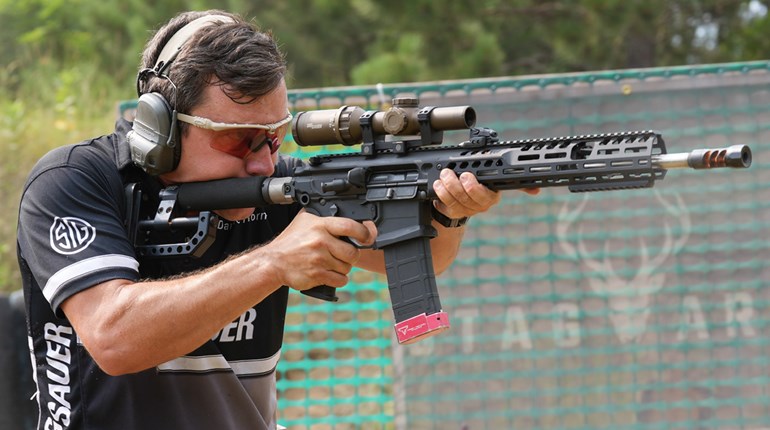
There has been a significant recent uptick in information directed toward the new gun owner. The primary reason for this is because the past two years have given birth to about 13.8 million new firearm owners: 8.4 million first-time firearm owners in 2020 and 5.4 million in 2021 (more than 33 percent of whom were women). Many who are paying attention to these numbers are making moves to help new firearm owners learn valuable information and become safer, more responsible gun owners.
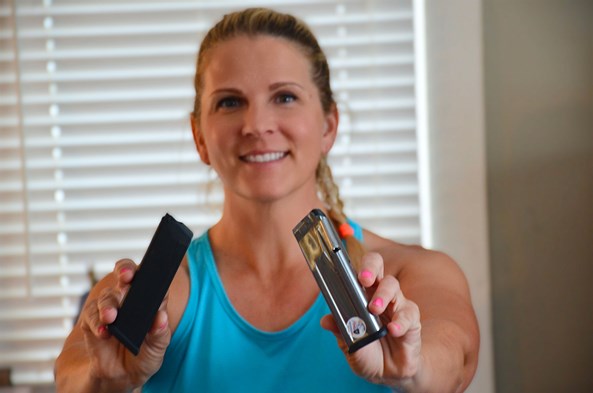
One simple way every firearm owner can be more responsible is by learning how their firearms and accessories work. This can seem like basic information for experienced gun owners, but it’s incredibly valuable for those who need it.
Handguns are the most common type of firearm owned, but not all handguns and magazines are the same. The following is some basic information about pistol magazines and how they function.
Basic Format of a Magazine
Modern firearm magazines are tubes of metal or polymer that hold ammunition, which follow a basic design format, no matter the type of pistol.
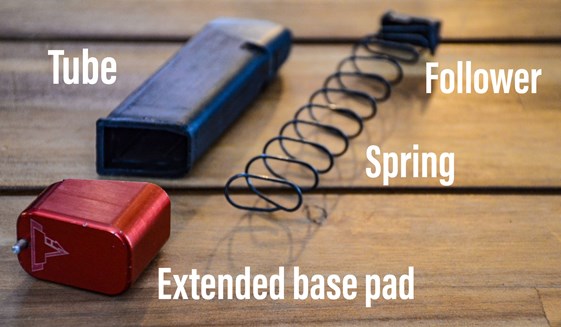
Body: The body of a magazine is a tube into which the ammunition fits. The bottom of the tube usually has a base plate or base pad; sometimes they can be extended to hold more ammunition.
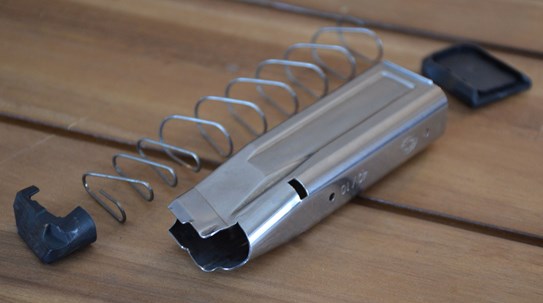
Spring: There is a spring inside the tube that keeps pressure against the rounds in order to push them up and out of the magazine, into the action of the firearm.
Follower: On top of the spring is a follower. The follower keeps the spring contained in the magazine tube when it is empty, and it gives the rounds something solid to push against as the spring is compressed.
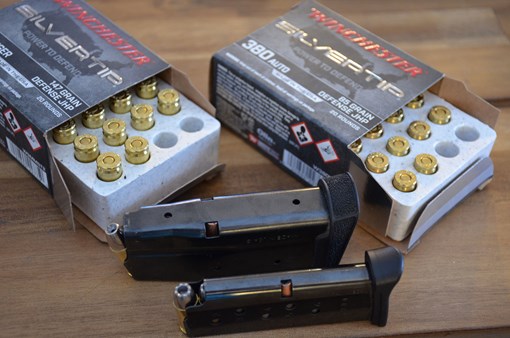
Single stack vs. double stack: Magazines can be single stack (a single stack of rounds inside the magazine’s tube) or double stack (a staggered stack of rounds inside the magazine).
Feed Lips: Feed lips are the parts at the top of the magazine tube that help keep the rounds contained and direct them as the action cycles and picks up the next round.
Metal Mags Versus Polymer
Pistol magazines can be metal or polymer (plastic). Some are a combination of both. There are pros and cons to each material.
Metal
Pros
- strong
- not susceptible to extremes of heat and cold
- feed lips are stronger due to nature of material
- scratches can be buffed out
Cons
- susceptible to rust
- can dent or damage from being dropped
- more expensive
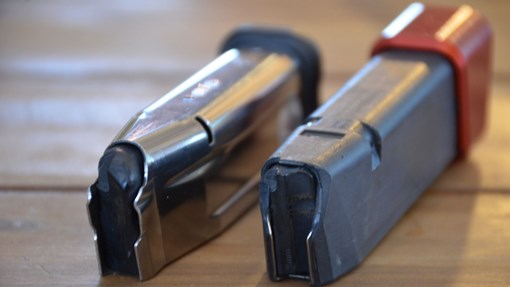
Polymer
Pros
- less expensive
- lighter weight
- usually many aftermarket base pad options
- resistant to corrosion or rust
Cons
- Extreme heat can impact their function (some types more prone than others)
- Extreme cold can cause them to crack (some types more prone than others)
- prone to wear on key points (magazine catch slot, feed lips)
- can crack when dropped (some types more prone than others)
- Excessive wear can shorten their life (e.g., practicing reloads and wearing against the magazine well)
When deciding what pistol to buy, it’s a good plan to perform basic manipulations with the magazines to see how easy or difficult they are to seat in the gun (both empty and full). This can be a factor to consider when deciding if the pistol is right for you.
Some Things to Be Aware of:
In general, a new pistol will come with a magazine or two. If you plan to purchase more magazines, you will want to make sure that you have the make and model of your pistol handy to ensure you buy the correct magazines. A little research will tell you if you have to buy factory magazines or if there are good aftermarket magazines available. (“Aftermarket” simply means not made by the original manufacturer. Often a model of firearm is so popular that the demand creates a market for parts and accessories made by others to fill the needs of consumers.)
Fit: Just because a magazine fits into the magazine well does not mean it is the correct magazine for your firearm. If the magazine is similar to what your pistol uses, it might even “click” into place and seem like it fits. So if you are borrowing a pistol, or helping someone prep for the range, make sure that you know what mags go with which pistol, and that you are putting the correct ammo into them! Failing to do this could be dangerous.
For example, manufacturers make pistols in various calibers. The magazines seem interchangeable and may even seat or lock in place. However, if 9 mm ammo (smaller diameter) was loaded into .40 (larger diameter) magazines and the user failed to notice and shot the wrong ammo, it could be dangerous.
Most magazines have the caliber stamped on the tube or on the follower. Make a habit of double-checking the caliber on the mag and your ammo when you load a gun. This is just a good habit, and definitely applicable if you go to the range with friends, or are using someone else’s gear. Being conscious of what ammo you put into your gun is a good habit to build.
Function: Magazines that are difficult to seat or require force to seat can usually be inserted much more easily with the slide locked back. So if you have trouble seating a magazine in your pistol, try locking the slide back.You can also download the magazine (remove a round or two from a full magazine) to make it easier to seat.
Cleanliness: Modern magazines are strong and, properly cared for, they will likely last the average user as long as they own the firearm. But keeping them clean, free from dirt and gravel (if you drop them on the range while training), and wiping metal mags off with a lightly oiled cloth after hot days on the range will help prolong their lifespan.
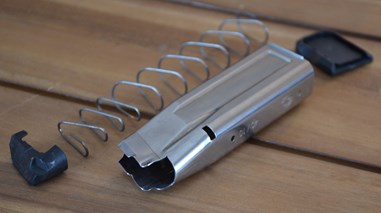
Spring Life: One item to track in your pistol magazines are the springs. Firearms usually have springs that play a role in function. Modern magazine manufacturers have loaded their polymer mags and left them loaded for years, only unloading and checking for function on a schedule. What wears springs down is repeated compression and expansion—loading and unloading. If you load and unload your magazines often, this might mean you need to replace the springs sooner than someone who leaves their magazines full (or empty). Don’t let the fact that springs wear out keep you from shooting! They’re inexpensive, and many aftermarket base pads come with a new spring.
Whatever type of pistol you have, understanding how it works is part of the experience of owning a firearm. Magazine management is a pretty simple part of using a pistol, and taking time to learn about them will make you a more competent gun owner!














